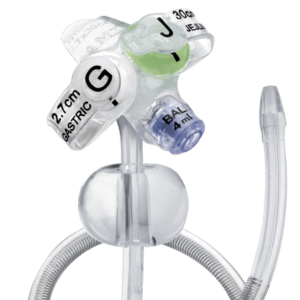
For patients and caregivers who are faced with the prospect of using a gastric tube, it can be a daunting and overwhelming experience. Navigating the world of gastric tubes requires understanding the purpose of the tube, the different types available, how to care for it, and potential complications that may arise.
This comprehensive guide aims to provide a clear and concise overview of everything you need to know about gastric tubes, helping to make the process more manageable and less stressful.
First and foremost, it's important to understand why a gastric tube may be necessary. Gastric tubes are commonly used to provide nutrition, hydration, and medications to individuals who cannot eat or drink by mouth. This could be due to a variety of reasons, including medical conditions such as dysphagia, severe illness, or recovering from surgery.
Several types of gastric tubes may be used, depending on the individual's needs and medical condition. The most common types include nasogastric tubes, which are inserted through the nose and into the stomach, and gastrostomy tubes, which are surgically inserted through the abdomen directly into the stomach.
Proper care and maintenance of a gastric tube are crucial to ensuring its effectiveness and preventing complications. This includes following strict hygiene protocols, securing the tube to prevent accidental dislodgement, and flushing the tube regularly to prevent blockages. Caregivers should receive thorough training from healthcare professionals on how to care for the tube, as well as guidance on recognizing signs of infection or other issues that may arise.
Despite diligent care, complications with gastric tubes can still occur. These may include tube dislodgement, blockages, infections, or irritation of the skin around the insertion site. It's important for patients and caregivers to be aware of the signs and symptoms of these complications and to seek medical assistance promptly if they occur. By staying vigilant and proactive, many complications can be managed effectively with early intervention.
In addition to physical care and maintenance, it's also important to consider the emotional and psychological aspects of using a gastric tube. For many patients, the tube represents a significant lifestyle change and can lead to feelings of frustration, embarrassment, or self-consciousness. Patients need to seek support from loved ones, healthcare providers, or support groups to help them navigate these emotions and adjust to life with a gastric tube.
Ultimately, navigating the world of gastric tubes requires a combination of education, support, and proactive care. By understanding the purpose of the tube, the different types available, how to care for it, and potential complications, patients and caregivers can approach the process with confidence and peace of mind. Remember, you are not alone in this journey – resources and support are available to help you every step of the way. With the right knowledge and mindset, managing a gastric tube can become a manageable and routine part of daily life.
